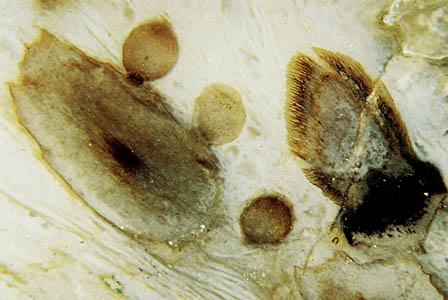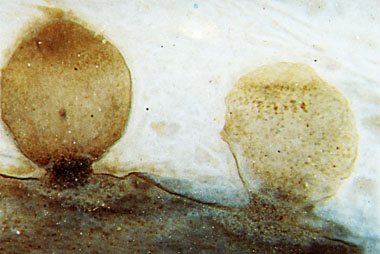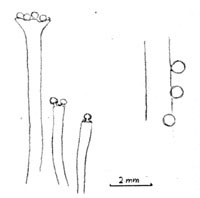

| deutsche Version |


| Remyophyton (male), after [2] | this sample | |
| axis
diameter
[mm] antheridium (globule) shape height width position pedicel length |
0.4
...0.6, seldom larger slightly wider than high 0.21 ...0.38 0.24 ...0.42 on the flat top of the axis 0.04 ...0.09 |
1.2 slightly higher than wide 0.6 0.54 laterally attached to the axis < 0.04 |
 Fig.3: Antheridia on the top of Remyophyton
delicatum (left), after [2]; globules (antheridia
or what else ?) arranged on an axis as seen on the cut face of this
sample (right).
Fig.3: Antheridia on the top of Remyophyton
delicatum (left), after [2]; globules (antheridia
or what else ?) arranged on an axis as seen on the cut face of this
sample (right). |
 |
18 |
|
|
|
|